The most important thing you can do for your boat in the off-season is to equip it with a quality cover. Even if you store your boat under a carport or in a garage, you should get a cover for your boat. A cover provides protection from many things: UV rays, water, dirt/debris, mold/mildew, etc. In addition, they also help keep out rodents like mice who would love to have a snack on your seat cushions or wiring. In this article, I hope to give you everything you need to make an informed decision about which cover is right for you and your boat.
Storage vs. Travel Covers
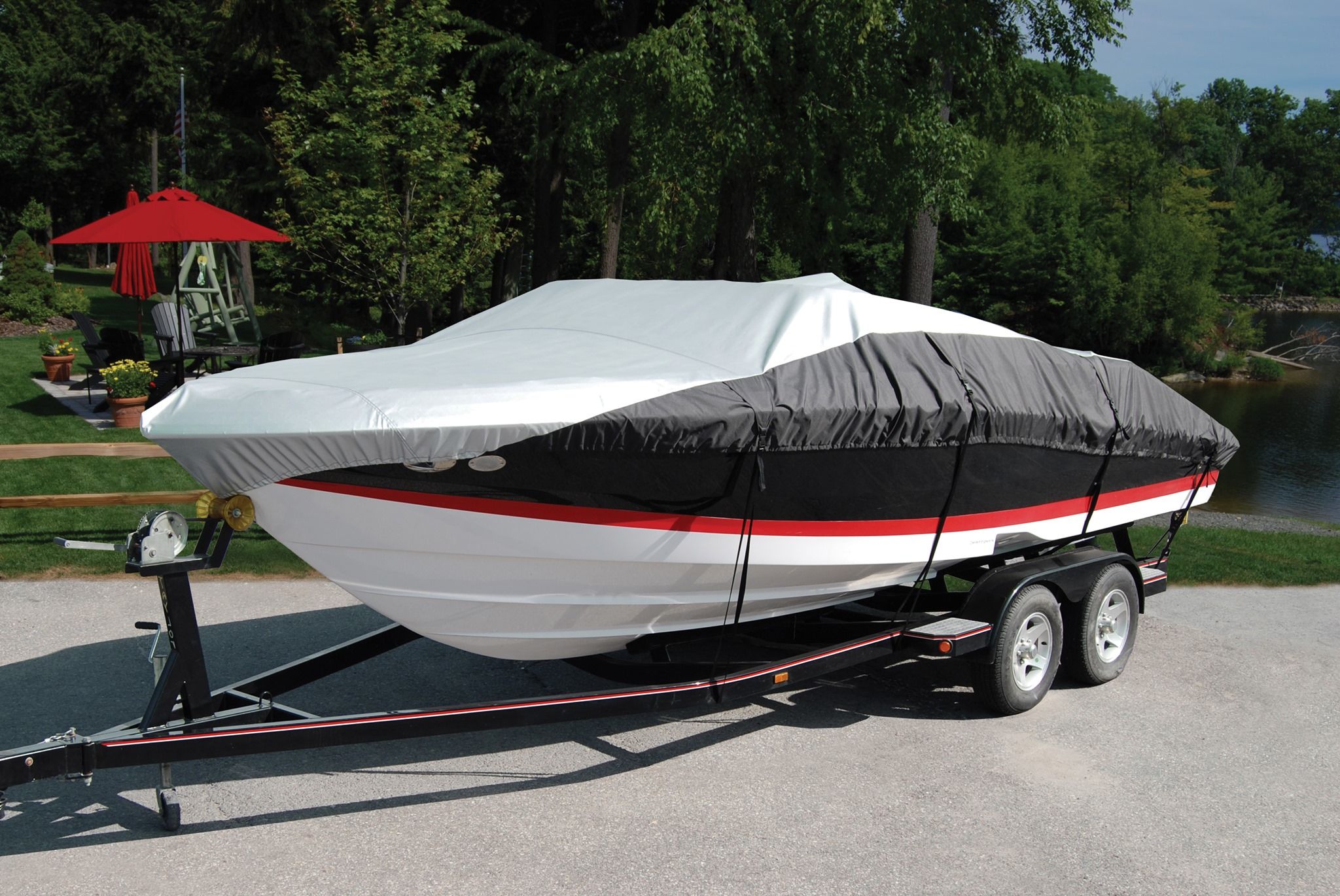
Storage covers are designed to be used only while the boat is in storage. They are loose-fitting and cost-effective. They should not be used during transit due to the potential for rips or tears, usually a result of excess material and lack of sufficient tie-downs.
Travel covers can be used both while your boat is in storage and when traveling down the road. It’s nice to be able to use your cover while traveling as it helps keep everything in your boat from flying out while on the highway. They have a tighter fit and incorporate a greater number of tie-downs when compared to storage covers. The tighter fit reduces billowing and subsequent tearing due to wind.
Cover Types
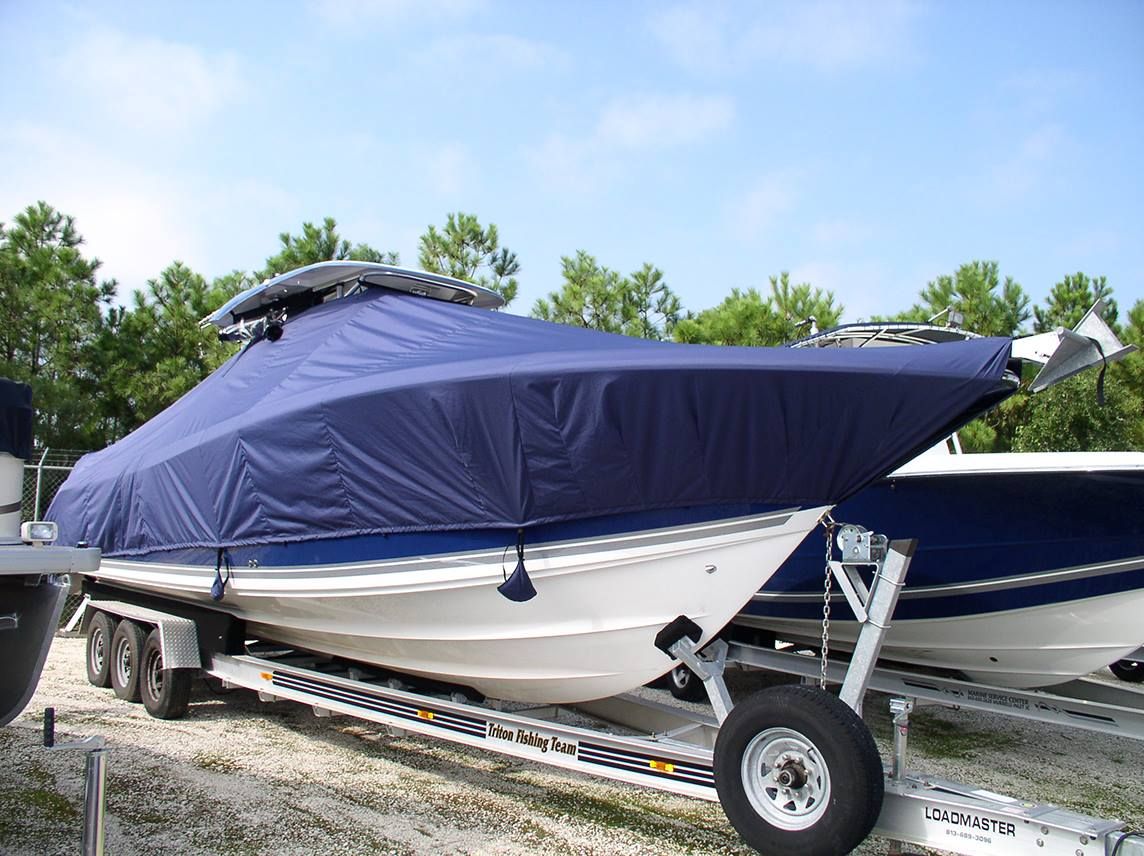
There are three main types of boat covers: universal, semi-custom, and custom. They each have their own pros and cons. The best one for you comes down to your preference and the environment the boat is stored in.
Universal Covers
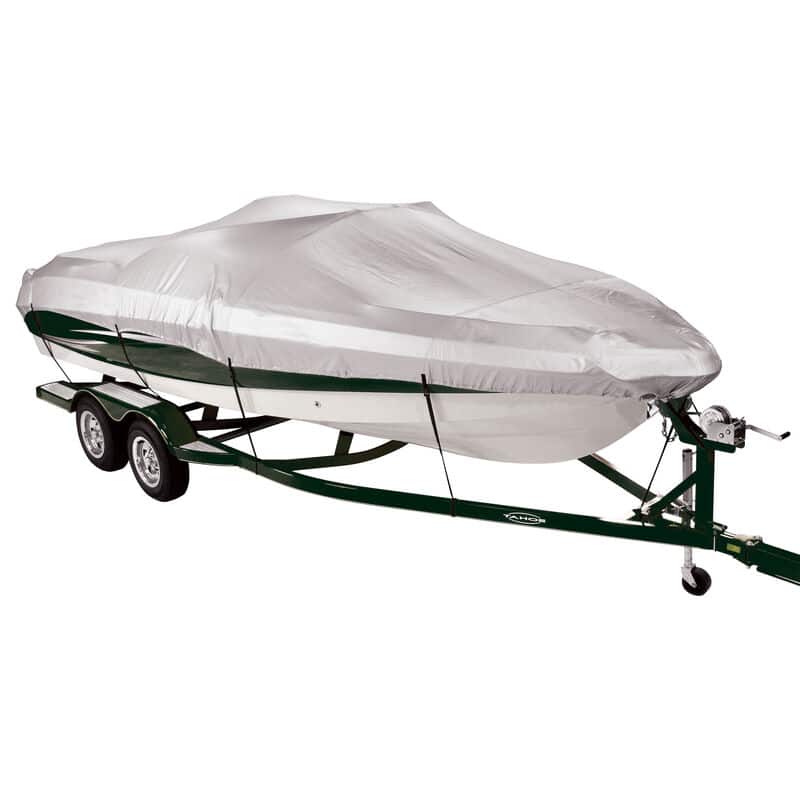
A universal fit boat cover is selected using the boat’s dimensions, which results in good coverage. However, universal covers typically have a lot of extra material that can cause billowing or allow water to pool. Because of the extra material, most universal covers are not designed for travel. They are the most cost effective of the three types.
Semi-Custom Covers
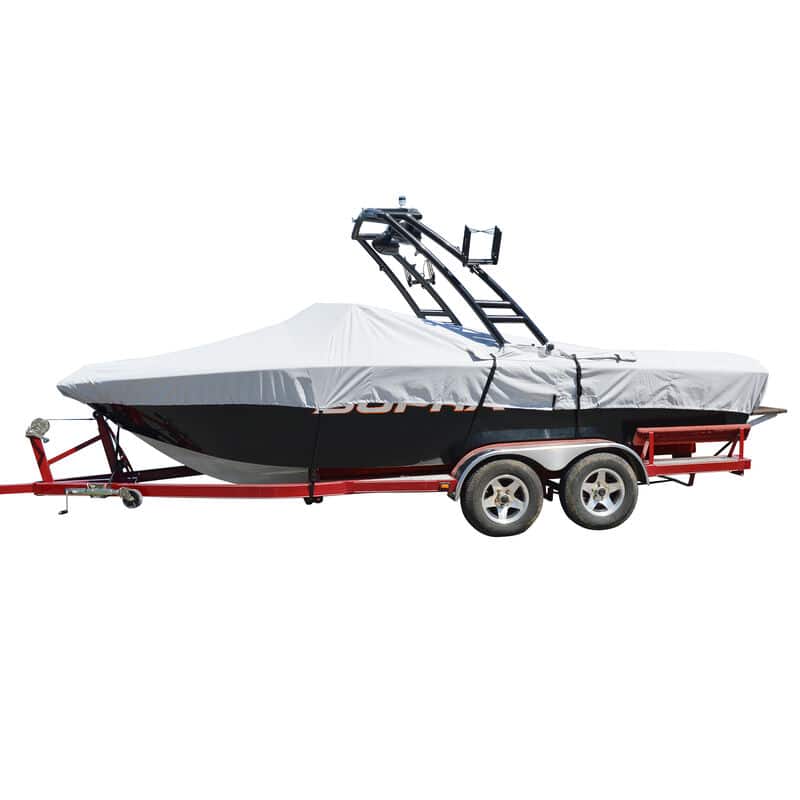
A semi-custom fit boat cover is also selected using the boat’s dimensions, but it takes into consideration the hull type as well. By designing the cover around the boat’s hull and not just the dimensions, you get a tighter fit. These are typically the most popular type of cover due to their affordable price and custom-like appearance. Most can be used for both storage and travel.
Custom Covers
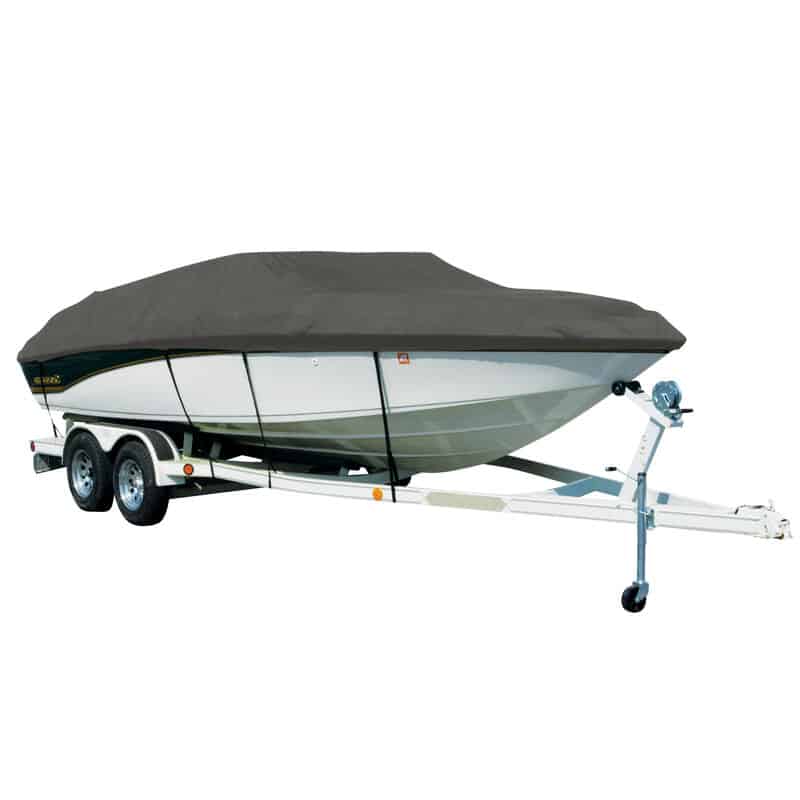
A custom-fit boat cover is selected using the make and model of the boat. It contours to the shape exactly, which provides a snug, exact fit with very little excess slack. A custom cover can be used in both storage and while traveling. Custom-fit covers are the most expensive of the three types.
Types of Fabric
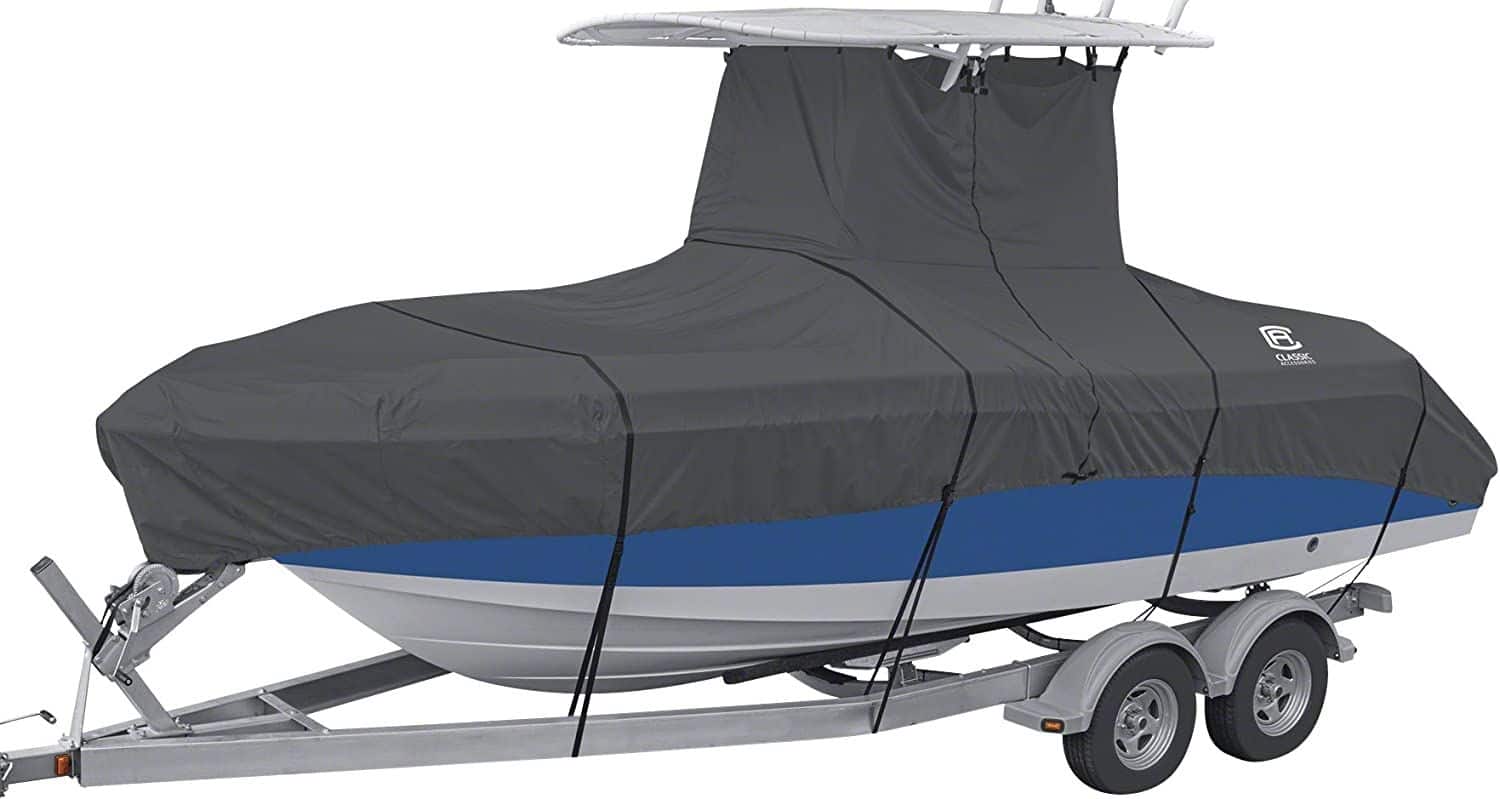
The most important part of a boat cover is arguably the fabric type. Boat covers can be made of many different materials: polyester, acrylic, nylon, and cotton. There isn’t one that is best for everyone, but there are some that work better than others for certain conditions. Ultimately, it comes down to what you value most and the climate you’re in. The fabric material dictates the cover’s ability to repel water, block UV rays, breathe, and resist mold/mildew.
If you live in an area with a lot of heat and humidity, you’ll need to make sure your cover is breathable to prevent mold and mildew build up. If you live in a climate with lots of rain and snow, you’ll need to make sure your cover keeps out water well.
It’s also important to understand the distinction between waterproof and water-resistant because they are not the same. Waterproof fabrics naturally repel water whereas water-resistant fabrics require a special coating to be applied to repel water, which can wear off over time.
Color Options
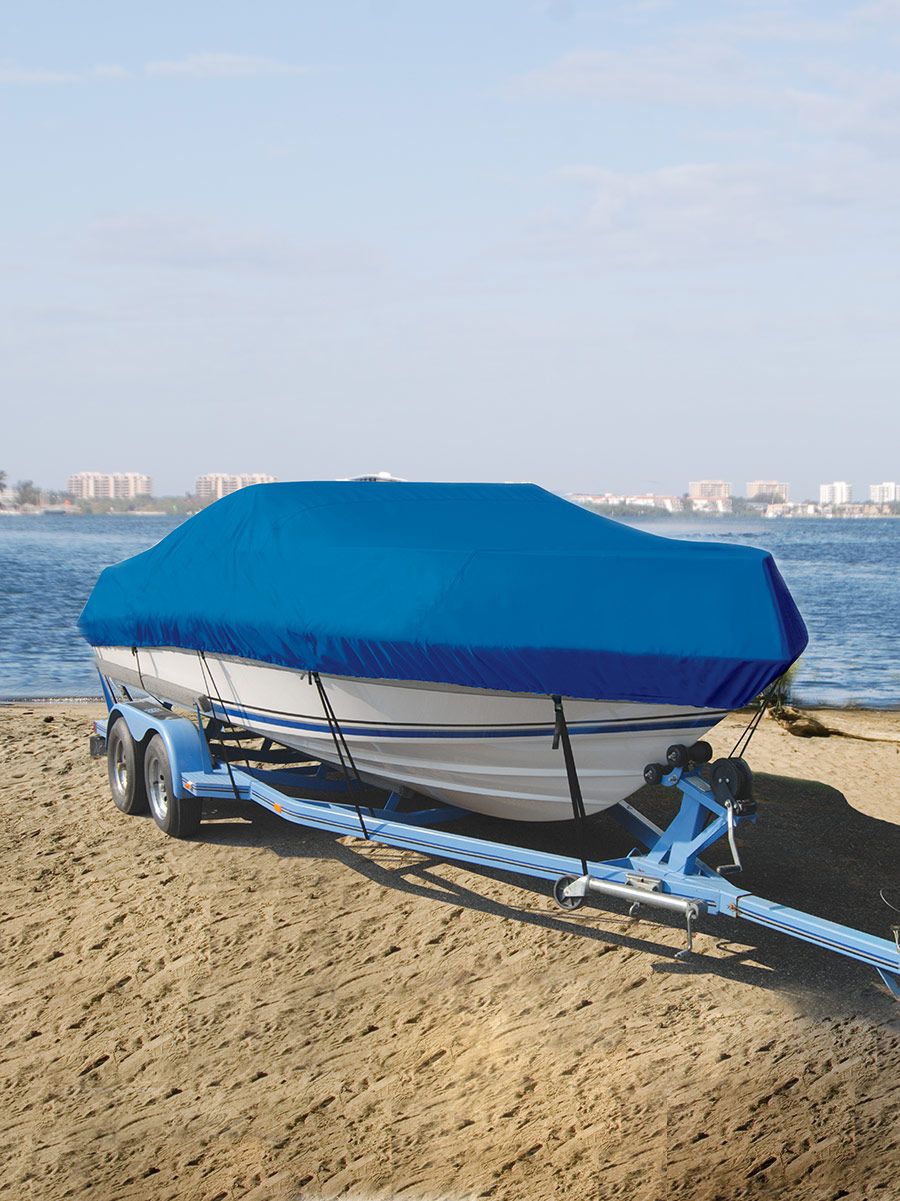
There is a method to selecting a boat cover color aside from just preference. For example, lighter colors do a better job of reflecting heat, but they also show stains more. A darker colored cover, on the other hand, will attract more heat, but it will also look better as it won’t stain as easily. Again, there isn’t one that is best for everyone. It comes down to which features you value most.
How to Measure a Cover for Your Boat
If you decide to go with either a universal or semi-custom fit cover, you will need to take some measurements of your boat to get the right one. You’ll need to measure the length and width of your boat.
The length measurement, also known as the center-line length, should be taken in a straight line from bow to stern (excluding the motor).
The width measurement, also known as the beam, should be taken at the widest part of the boat and measured flat in a straight line.
It’s important that you measure the boat accurately. If you end up with a cover that is too big, it will billow in the wind which leaves it susceptible to rips and tears. If it’s too short, you’ll end up stretching the cover during installation which puts extra stress and damage on the seams.
Cover Installation
The best advice for installing your exact-fit boat cover is to follow the provided instruction manual. However, I do have a few tips you can use to help with this.
- Make sure you protect your cover from all sharp objects on your boat beforehand, so they don’t rip the cover. If you find any sharp points, cover them with a thick piece of cloth or foam.
- Make sure to tighten the tie down straps evenly. If you tighten one side more than the other, the cover will end up lopsided.
- Start by securing the cover at the bow, then work your way back to the stern. The cover should have a tag that tells you which part is for the bow.
Cover Care
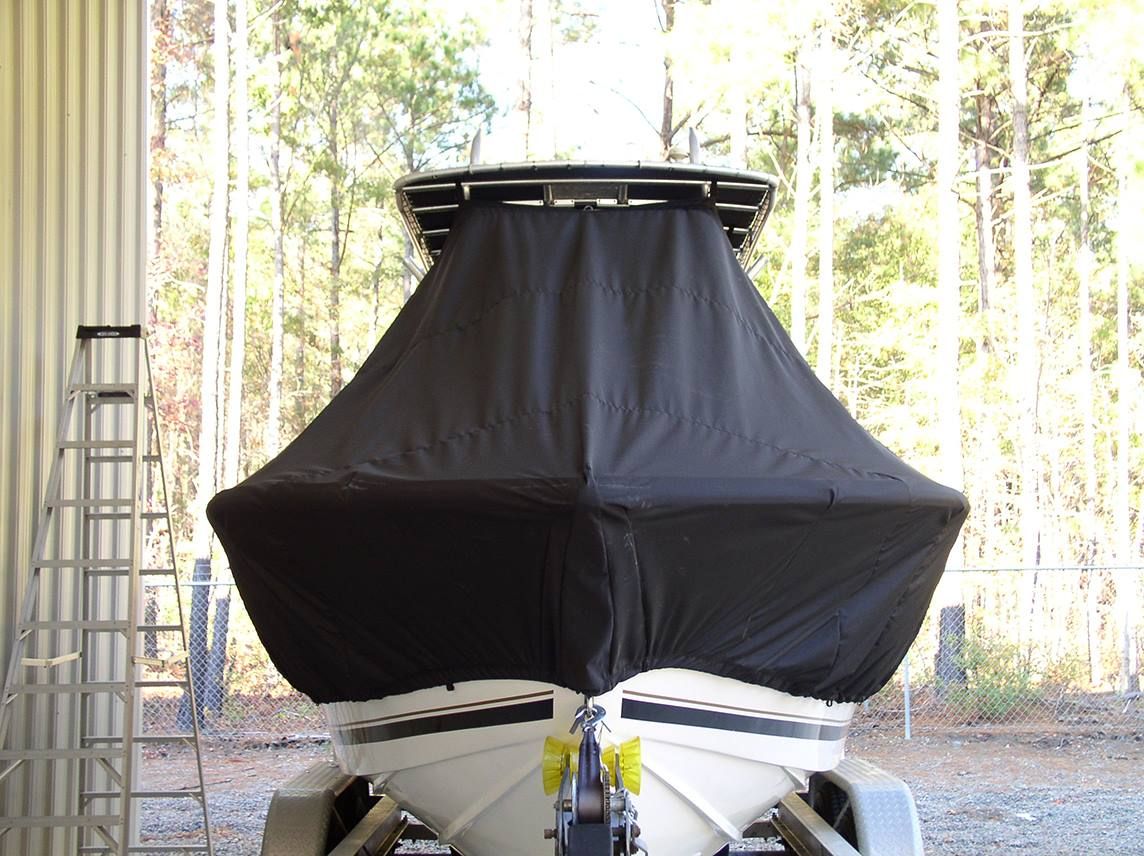
In order to get the best life out of your cover, you’ll need to be sure it’s cared for properly. The best way to do this is by following the care guidelines outlined in your owner’s manual. The most important things to remember are to keep it clean, mend any rips or tears, and be sure the cover is dry before storing it. In most cases, the cover is cleaned best with warm soapy water, but some also call for bleach.
Overton’s Cover Selection Tool
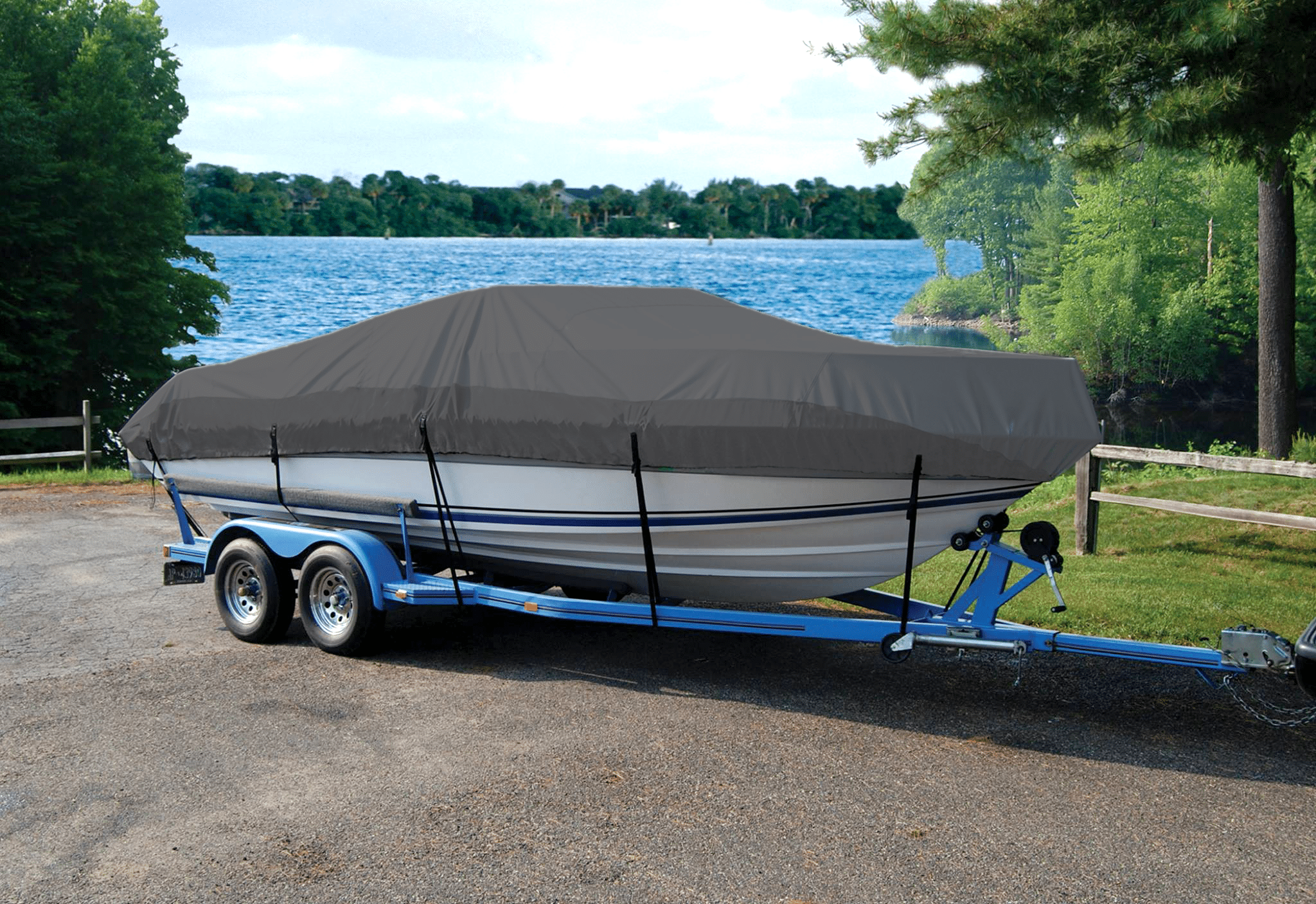
Now that we have gone over the basics of selecting a boat cover, it’s time to pick out yours. Check out our Boat Cover Selector Tool to get started!
If you have any tips or personal experiences to offer about choosing the right boat cover, share them in the comments below.

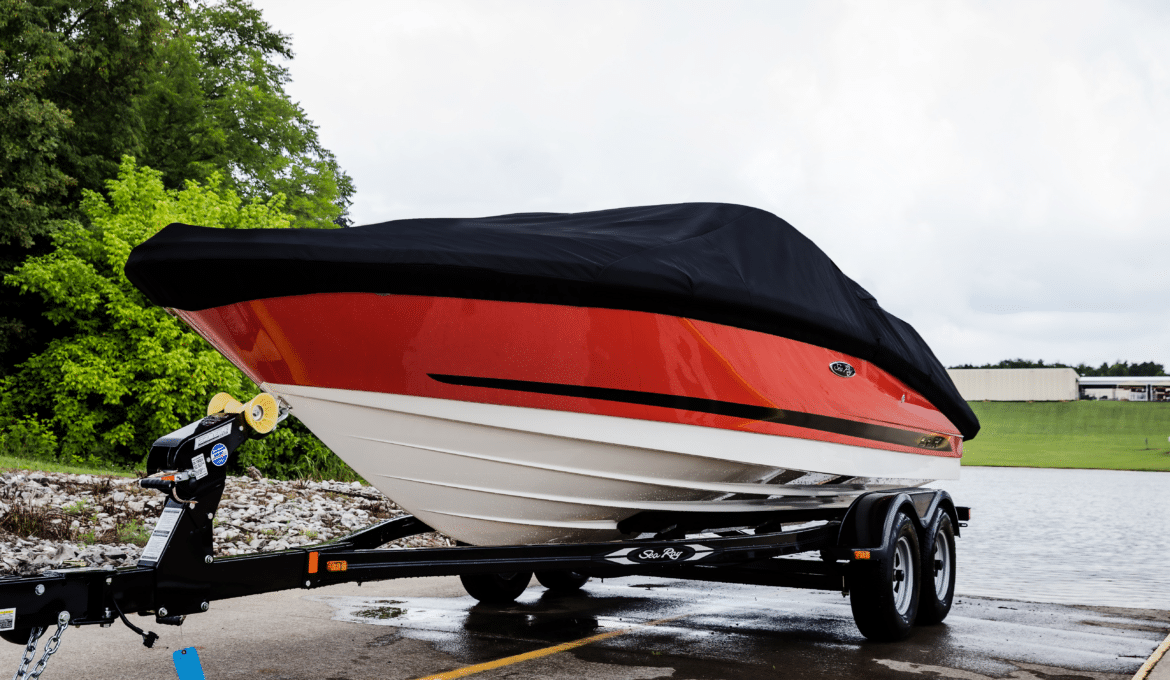



I have an 18 ft. pontoon boat and I need a cover for it. How much?
There are a few different options depending on your needs. If you’re just looking for a basic storage cover then the Covermate HD 600 Pontoon Boat Mooring And Storage Cover would be a good option for you and it’s very cost-effective.
[…] There are many different cover options. For a more detailed explanation, check out Choosing the Right Cover for Your Boat. […]
If you’re looking for a boat cover, you’ll want to make sure you prioritize durability. Materials like polyester and marine-grade canvas are great options. It’s also important to make sure you get a snug fit, with secure strapping and proper ventilation to prevent mold. If you plan on trailering your boat, look for covers designed for transportation.
All great points, thanks for sharing Hudson!